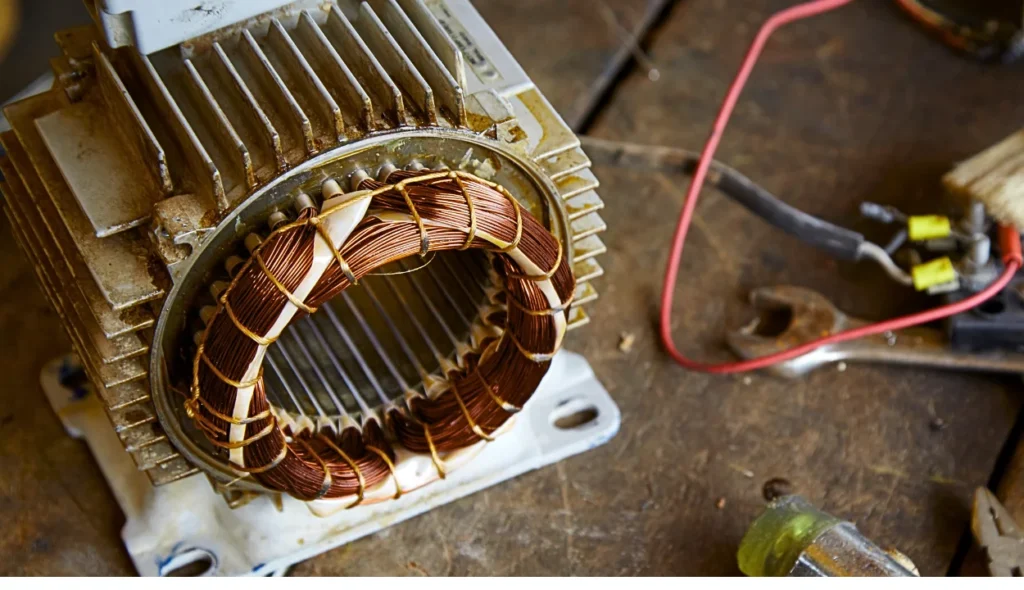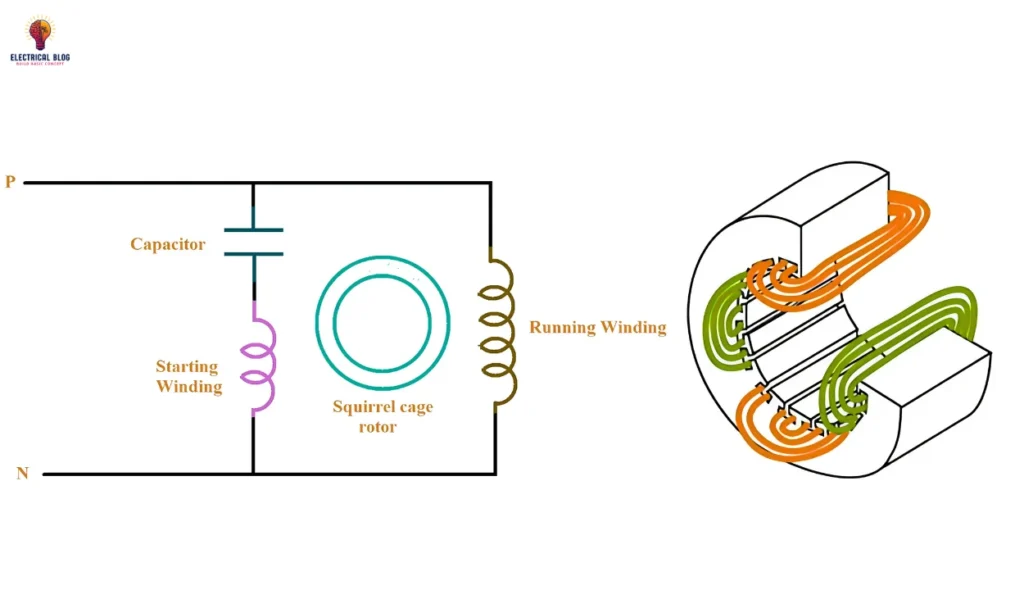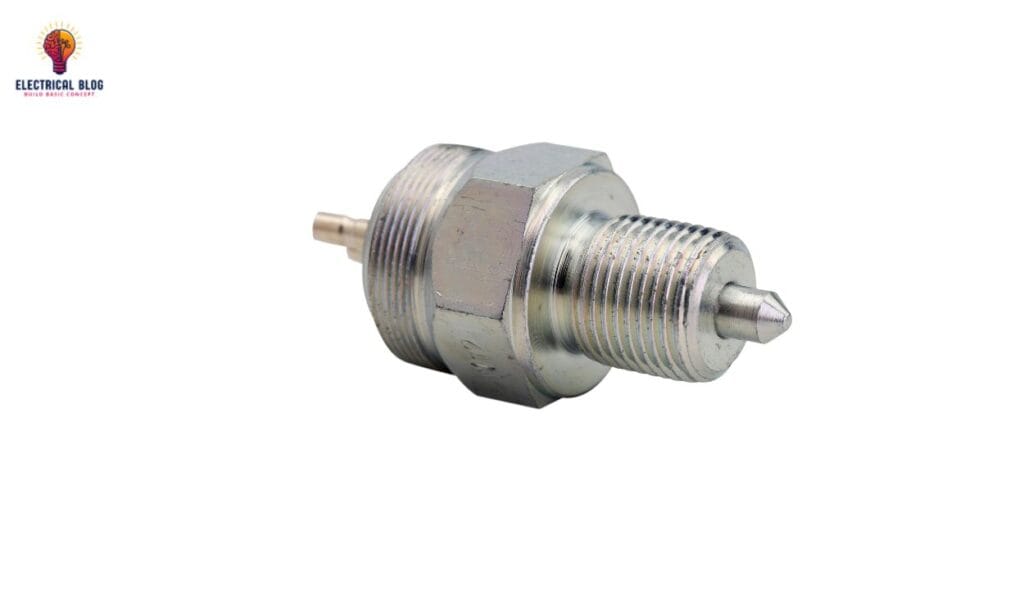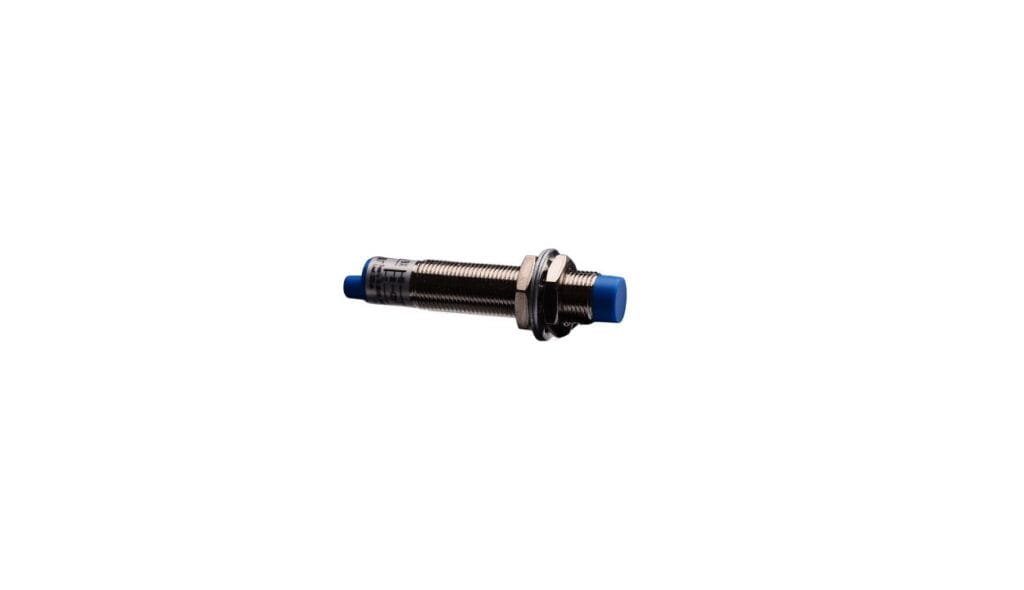Introduction
The single-phase induction motor is an essential part of both household and industrial setups. Its simplicity and efficiency make it a ubiquitous choice for domestic and commercial applications where only single-phase power is available. Unlike a three-phase motor, it differs in its working as it is not self-starting, which brings challenges in its construction and capability. However, various methods have been explored to enable its smooth operation.
This electric motor operates on the principle of electromagnetic induction, with an equivalent circuit model used for performance evaluation. Its types vary based on asynchronous operation and rotor design, influencing key aspects of performance. While widely used, understanding its circuit, model, and operational aspects helps in distinguishing it from three-phase motors. Its versatility in construction and applications continues to shape the industry.
What is a single-phase induction motor?
A single-phase motor consists of a stator with coils and a rotor that is attached to the shaft for output. Unlike a three-phase system, it relies on AC power to create a pulsating magnetic field in the winding. This field generates an induced current in the rotor, which is usually a squirrel cage design with bars that are short-circuited by rings. However, the failure to generate enough torque prevents it from being self-starting.
To solve this, various techniques have been derived to create a quasi-rotating effect, enabling the motor to start on its own. The electromagnetic interaction between the stator and rotor helps achieve better capability in performance. Since it produces only a pulsating motion initially, special starting methods like capacitors or auxiliary windings are used. The motor’s construction is similar to a three-phase design but requires additional support for smooth operation.
Single-phase induction motor diagram
Working Principle of Single-Phase Induction Motor
A single-phase motor operates using an AC supply to energize the stator winding, which creates a pulsating magnetic field. This field intensifies in one direction, then diminishes to zero, and builds up in the opposite direction. Since the rotor is not naturally in motion, it does not generate enough torque to start on its own. This makes a single-phase induction motor a self-starting challenge.
To solve this issue, an auxiliary winding or other special means is used to create a rotating effect. This approach produces a parallel field, helping the rotor to start turning in the required direction. Once the motor gains speed, the additional device used for starting is removed, and the motor continues running. The Cross Field Theory and Double Revolving Field Theory provide theoretical frameworks to explain this process.
According to Cross Field Theory, the motor develops a reverse electromagnetic field when it begins spinning. The Double Revolving Field Theory describes how the induction motor operates by considering the magnetic field as two rotating parts moving in opposite directions. These frameworks explain how the motor eventually generates stable motion. The key is balancing these effects to achieve smooth performance.
Since the single-phase induction motor relies on a 1-phase system, it requires specific mechanisms to function efficiently. The stator and rotor must be properly connected to ensure stable rotation. Once the motor is excited, it follows a continuous cycle of energy conversion. With the right setup, the motor operates efficiently and provides the necessary torque for various applications.
Structure of a Single-Phase Induction Motor
The construction of a single-phase motor consists of two main parts: the stator and the rotor. The stator is a stationary component with a laminated iron core that holds the windings inside slots and creates a magnetic field.
The rotor is a rotating unit, usually a squirrel cage type, made of copper or aluminum bars that are short-circuited by end rings. This entire setup is placed inside the stator to ensure smooth induction and efficient operation.
Components of Single-Phase Induction Motors
Stator in a Single-Phase Induction Motor
The stator is the stationary part of the motor, responsible for producing the magnetic field required for operation. It consists of stator windings, including the primary winding and auxiliary winding, which help in creating a phase shift. When AC voltage is applied, the windings generate a rotating effect, allowing the motor to function. The construction of the single-phase motor is similar to that of a three-phase motor but with some differences in the coil arrangement.
The synchronous speed (Ns) of the induction motor is determined by the formula Ns = (120f) / P, where f is the frequency and P represents the number of poles. Some asynchronous motors, like shaded pole motors, rely on additional techniques for operation. The concentric coils in the stator allow adjustments in the turns per concentric circle to optimize performance. This unique design helps the motor maintain stable speed and efficiency.
Rotor of Single-Phase Induction Motor
The rotor is a key part of the single-phase induction motor, designed to rotate when the stator generates a rotating magnetic field. It consists of conductive bars placed inside slots and is structured as a squirrel cage. These bars are short-circuited at both ends by end rings, forming a closed circuit that helps in producing motion. As the magnetic field cuts through the rotor, it induces currents that interact with the stator field. This interaction strengthens the rotation process and helps maintain efficiency.
The mechanical strength of the rotor is improved by braced conductors, ensuring durability during operation. Since the end rings are permanently connected, the electrical resistance remains low, making external adjustments conceivable. The absence of a slip ring and brushes simplifies the construction of the induction motor, reducing maintenance needs. The rotor constantly interacts with the stator, converting electrical energy into rotational movement. This efficient design allows the squirrel-cage motor to operate smoothly with minimal energy loss.
Single-Phase Induction Motor
Why single-phase induction motor not self-starting?
A single-phase motor fails to generate enough starting torque because the magnetic field it produces is pulsating. The rotor experiences equal and opposite forces, causing it to rest without any rotational force. Since there is no continuous push, the motor cannot enter the accelerating mode without external help.
To solve this, methods like split-phase, shaded pole, and capacitor start are used to introduce a phase difference. This transforms the pulsating field into a quasi-rotating one, enabling the rotor to move. Even a small residual magnetic field can help accelerate the motor and create enough net motion for self-starting.
Equivalent Circuit of a Single-Phase Induction Motor
The equivalent circuit of a single-phase induction motor helps in analyzing its dynamic behavior and efficiency. It consists of components like stator resistance (Rs), stator reactance (Xs), rotor resistance (Rr), and rotor reactance (Xr). These values are used for performance evaluation under different loading conditions to determine motor efficiency.
The model works similarly to a transformer, where the stator acts as the primary and the rotor as the secondary circuit. The motor is magnetically coupled through the magnetizing branch (Xm), affecting power transfer. By analyzing the circuit parameters, engineers can calculate slip and improve motor design for better performance.
Types of Single-Phase Induction Motors
- The Split Phase Motor has two windings with different resistances to create a phase difference for starting. This design helps produce enough starting torque to rotate the motor efficiently.
- The Shaded Pole Motor relies on conductor shading around the poles to delay magnetic flux and create a phase lag. This type is simple but provides low starting torque and is used in small applications.
- The Capacitor Start Motor uses a starting capacitor in series with the auxiliary winding to increase initial power. This setup boosts starting torque, making it suitable for heavy loads.
- The Permanent Split Capacitor Motor has a permanent capacitor that helps in both start mode and running. Since it does not need a switch, it operates smoothly with moderate starting torque.
- The Capacitor Start Capacitor Run Motor has dual capacitors to provide maximum starting torque. It works in both start mode and run mode, making it highly efficient for industrial applications.
Application of Single-Phase Induction Motors
Household appliances like mixers, grinders, and blowers rely on induction motors due to their simple design and self-starting capabilities.
Fans and air conditioners benefit from these motors, as they provide efficient operation within a power range of 1/6 HP to 1/4 HP.
Commercial refrigerators and water pumps use 1 HP motors with a power rating of 0.75 kW, ensuring smooth performance.
Woodworking and metalworking industries depend on light industrial tools such as lathe machines and drilling machines for precision work.
CNC machines and other industrial equipment use these motors for frequent starts and stops, maintaining accuracy in small industries.
Agricultural machines, including threshing machines and water pumps, use these motors for reliable power in farming applications.
Their rugged construction makes them ideal for commercial and industrial applications, ensuring durability in various environments.
Advantages of Using a Single-Phase Induction Motor
Self-starting nature allows for a direct connection to the single-phase supply, making installation simple.
Simple construction and squirrel-cage rotor design make the motor maintenance-free and rugged for long-term use.
Economical and inexpensive, these motors are widely available in standard designs with different ratings.
Compact and lightweight, they are ideal for domestic and light applications requiring small motors.
Easy speed control can be achieved using external resistors in starters, offering flexible performance.
These motors are known for their reliability, requiring minimal maintenance while being energy-efficient.
Disadvantages of Single-Phase Induction Motors
It requires special circuits for self-starting, which increases costs and makes the motor bulkier.
The motor produces torque pulsations, leading to vibrations and noise during operation, which reduces efficiency.
It draws a higher current from the supply mains at startup, increasing power consumption by 20% to 30%.
The efficiency of a single-phase motor is lower than that of a 3-phase motor by about 5% to 10% in equivalent models.
The maximum torque is only 60-65% of what a 3-phase motor delivers, making it less powerful.
It has a low power factor of 0.4 to 0.5, compared to the unity power factor seen in three-phase motors.
Difference Between 3-Phase and Single-Phase Induction Motors
| Feature | 3-Phase Induction Motor | 1-Phase Induction Motor |
|---|---|---|
| Power Supply | Uses a 3-phase AC supply that is balanced for smooth operation. | Operates on a single-phase AC supply, making it suitable for small loads. |
| Construction | Has 3-phase windings that allow efficient energy transfer. | Uses two windings, one for starting and the other for running. |
| Starting | It is self-starting and does not require external support. | Needs auxiliary circuits like a capacitor to assist in starting. |
| Power Factor | Generally close to unity, ensuring stable performance. | Lower Power Factor of 0.4 to 0.5 due to non-sinusoidal current. |
| Torque | Provides higher torque and better load handling at a rated load. | Delivers about 60-65% of the torque of a 3-phase induction motor. |
| Efficiency | Achieves higher efficiency of 95-97%, reducing energy waste. | Has lower efficiency of 90-92% due to increased losses. |
| Applications | Used in industrial applications for heavy machinery. | Preferred for household applications and machines requiring less than 1HP. |
Conclusion
The single-phase induction motors are widely used due to their simple and rugged construction. They have widespread applications in household and small commercial appliances despite their starting problems. Various techniques are used to make them self-starting, improving their efficiency and usability. Their power rating is lower when compared to three-phase motors, but they remain essential for many tasks. The equivalent circuit and modeling help in understanding their working principles and improving designs. These key aspects make them a reliable choice for operations requiring a single-phase supply.





